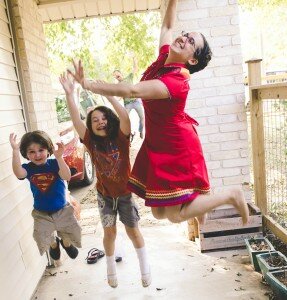Now and again, I find myself in a rut. I recognize it in my prose, where I write long sentences with semi-colons and similar syntactical patterns on either side. I recognize it in my poetry, where I realize that the pacing of one poem basically overlaps with the one I wrote the previous week, and I could substitute lines and barely recognize the change.
When ruts hit, I turn to improv.
I’ve been performing improv since I was a teenager, but it became an essential part of my daily life while I was in the thick of graduate school. I’d plod away at my dissertation in the daytime, then perform on stages around Austin, Texas in the evenings. It took me longer than I’d care to admit to realize that the principles I so passionately espoused about the power of improv were also pretty ideal tools to revitalize my academic writing.
The number one rule of improv is to say “Yes.” The truth is, it’s usually vastly easier to say no. Toddlers find their strength in “No!” Teenagers find a different strength in “No.” “No” seems powerful, but eventually “No” leads to stagnation, to stasis. It’s safe, and nothing will change. But…nothing will change. Say “yes”—on stage, in your life, in your writing—and you’ll find yourself being surprised, taking risks, and having adventures.
Safe is fine. Risky is fun. And scary. And powerful. And surprising.
When we say yes to taking risks, we let our guard down. We let in ideas, thoughts, words, and stories that challenge us, that could be scary, that go beyond what we believe we “should” do or think or say.
Doing risky creative work involves talking to strangers, climbing on ledges, and challenging the authoritative voices of teachers and doctors and judges. Read more…
